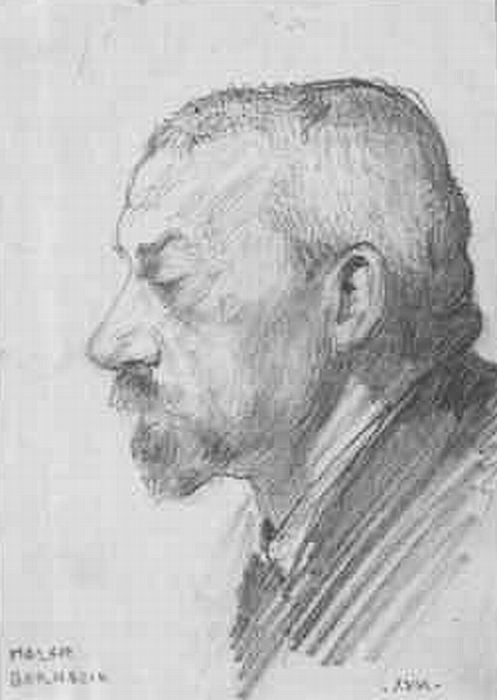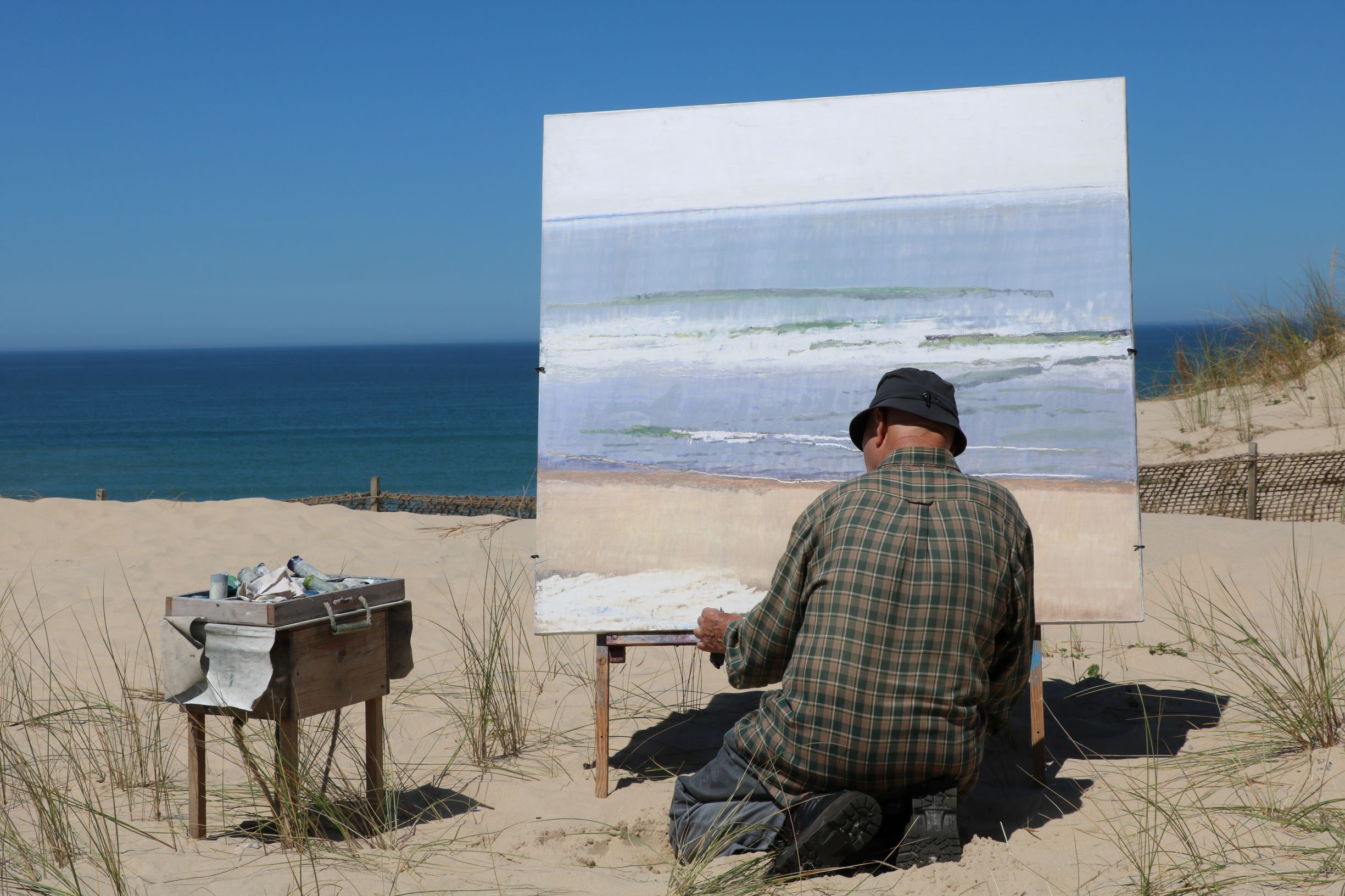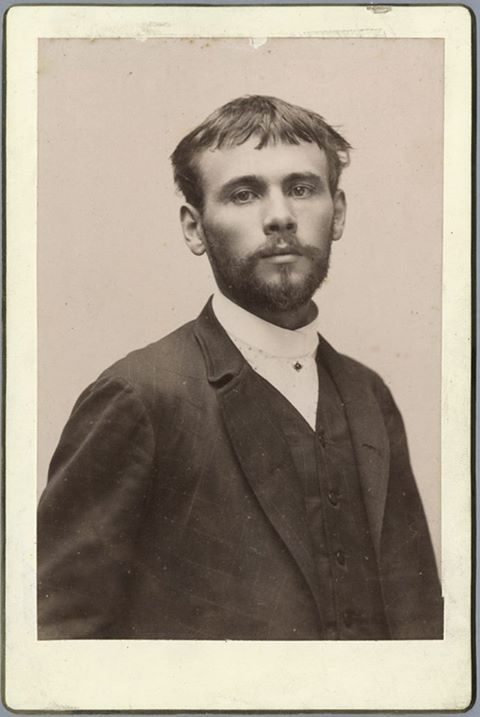|
Wilhelm Bernatzik
Wilhelm Bernatzik (18 May 1853 – 25 or 26 November 1906) was an Austrian painter. Life Bernatzik was born in Mistelbach. He was the brother of the constitutional law teacher Edmund Bernatzik. Initially a law student at his father's request, he studied at the Special School for Landscape Painting at the Academy of Fine Arts, Vienna under Eduard Peithner von Lichtenfels from 1873 to 1875. In 1875, he received the Golden Füger-Medal and studied at the Kunstakademie Düsseldorf until 1878. Finally, he finished his training in Paris with Léon Bonnat. In 1880 he joined the Vienna Künstlerhaus. He painted ''The Vision of St Bernhard'' in 1882 in Heiligenkreuz Abbey, having been attracted by the mood of the Gothic place. At the 1894 World Exhibition in Antwerp, he won a medal (second class). In 1897 he was a founding member of the Vienna Secession, and served as the group's president in 1902–03. With the art critic Julius Meier-Graefe he organised a successful Impressionist ... [...More Info...] [...Related Items...] OR: [Wikipedia] [Google] [Baidu] |
Wilhelm Bernatzik Selbstbildnis
Wilhelm may refer to: People and fictional characters * William Charles John Pitcher, costume designer known professionally as "Wilhelm" * Wilhelm (name), a list of people and fictional characters with the given name or surname Other uses * Mount Wilhelm, the highest mountain in Papua New Guinea * Wilhelm Archipelago, Antarctica * Wilhelm (crater), a lunar crater See also * Wilhelm scream, a stock sound effect * SS Kaiser Wilhelm II, SS ''Kaiser Wilhelm II'', or USS ''Agamemnon'', a German steam ship * Wilhelmus, the Dutch national anthem {{Disambiguation ... [...More Info...] [...Related Items...] OR: [Wikipedia] [Google] [Baidu] |
Vienna Secession
The Vienna Secession (german: Wiener Secession; also known as ''the Union of Austrian Artists'', or ''Vereinigung Bildender Künstler Österreichs'') is an art movement, closely related to Art Nouveau, that was formed in 1897 by a group of Austrian painters, graphic artists, sculptors and architects, including Josef Hoffman, Koloman Moser, Otto Wagner and Gustav Klimt. They resigned from the Association of Austrian Artists in protest against its support for more traditional artistic styles. Their most influential architectural work was the Secession Building designed by Joseph Maria Olbrich as a venue for expositions of the group. Their official magazine was called '' Ver Sacrum'' (''Sacred Spring'', in Latin), which published highly stylised and influential works of graphic art. In 1905 the group itself split, when some of the most prominent members, including Klimt, Wagner, and Hoffmann, resigned in a dispute over priorities, but it continued to function, and still functions ... [...More Info...] [...Related Items...] OR: [Wikipedia] [Google] [Baidu] |
Österreichisches Biographisches Lexikon 1815–1950
The ''Österreichisches Biographisches Lexikon 1815–1950'' (''ÖBL''), ''Austrian Biographical Lexicon 1815-1950'', is a dictionary of biographical entries for individuals who have contributed to the history of Austria, published by the Austrian Academy of Sciences. It currently comprises 12 volumes (60 deliveries) with a total of more than 16,000 biographies. It follows the ''Biographisches Lexikon des Kaiserthums Oesterreich ''Biographisches Lexikon des Kaiserthums Oesterreich'' (English, ''Biographical Encyclopedia of the Austrian Empire'') (abbreviated ''Wurzbach'' from the author's surname) is a 60-volume work, edited and published by Constantin von Wurzbach, cont ...'' (''Biographical Encyclopedia of the Austrian Empire''), which dealt with the period between 1750 and 1850 and which was published from 1856 to 1891 in 60 volumes, containing 24,254 critical biographies. Published volumes *Volume 1 (''Aarau Friedrich–Gläser Franz''), 1957 (reprinted without changes 1 ... [...More Info...] [...Related Items...] OR: [Wikipedia] [Google] [Baidu] |
Österreichische Galerie Belvedere
The Österreichische Galerie Belvedere is a museum housed in the Belvedere palace, in Vienna, Austria. The Belvedere palaces were the summer residence of Prince Eugene of Savoy (1663–1736). The ensemble was built in the early eighteenth century by the famous Baroque architect, Johann Lucas von Hildebrandt, and comprises the Upper and Lower Belvedere, with the Orangery and Palace Stables, as well as extensive gardens. Today, the Belvedere houses the greatest collection of Austrian art dating from the Middle Ages to the present day, complemented by the works of international artists. At the Upper Belvedere, visitors not only encounter artworks drawn from over five hundred years of art history but can also experience the magnificent staterooms. In addition to the Lower and Upper Belvedere, the museum has further sites at Prince Eugene's town palace and the 21er Haus as well as the Gustinus Ambrosi Museum. The Belvedere's art collection presents an almost complete overview of th ... [...More Info...] [...Related Items...] OR: [Wikipedia] [Google] [Baidu] |
Genre Painting
Genre painting (or petit genre), a form of genre art, depicts aspects of everyday life by portraying ordinary people engaged in common activities. One common definition of a genre scene is that it shows figures to whom no identity can be attached either individually or collectively, thus distinguishing it from history paintings (also called ''grand genre'') and portraits. A work would often be considered as a genre work even if it could be shown that the artist had used a known person—a member of his family, say—as a model. In this case it would depend on whether the work was likely to have been intended by the artist to be perceived as a portrait—sometimes a subjective question. The depictions can be realistic, imagined, or romanticized by the artist. Because of their familiar and frequently sentimental subject matter, genre paintings have often proven popular with the bourgeoisie, or middle class. Genre subjects appear in many traditions of art. Painted decorations in anc ... [...More Info...] [...Related Items...] OR: [Wikipedia] [Google] [Baidu] |
En Plein Air
''En plein air'' (; French for 'outdoors'), or ''plein air'' painting, is the act of painting outdoors. This method contrasts with studio painting or academic rules that might create a predetermined look. The theory of 'En plein air' painting is credited to Pierre-Henri de Valenciennes (1750–1819), first expounded in a treatise entitled ''Reflections and Advice to a Student on Painting, Particularly on Landscape'' (1800), where he developed the concept of landscape portraiture by which the artist paints directly onto canvas ''in situ'' within the landscape. It enabled the artist to better capture the changing details of weather and light. The invention of portable canvases and easels allowed the practice to develop, particularly in France, and in the early 1830s the Barbizon school of painting in natural light was highly influential. Amongst the most prominent features of this school were its tonal qualities, colour, loose brushwork, and softness of form. These were varian ... [...More Info...] [...Related Items...] OR: [Wikipedia] [Google] [Baidu] |
Lower Austria
Lower Austria (german: Niederösterreich; Austro-Bavarian: ''Niedaöstareich'', ''Niedaestareich'') is one of the nine states of Austria, located in the northeastern corner of the country. Since 1986, the capital of Lower Austria has been Sankt Pölten, replacing Vienna which became a separate state in 1921. With a land area of and a population of 1.685 million people, Lower Austria is the second most populous state in Austria (after Vienna). Other large cities are Amstetten, Klosterneuburg, Krems an der Donau, Stockerau and Wiener Neustadt. Geography With a land area of situated east of Upper Austria, Lower Austria is the country's largest state. Lower Austria derives its name from its downriver location on the Enns River which flows from the west to the east. Lower Austria has an international border, long, with the Czech Republic (South Bohemia and South Moravia Regions) and Slovakia (Bratislava and Trnava Regions). The state has the second longest external border of all A ... [...More Info...] [...Related Items...] OR: [Wikipedia] [Google] [Baidu] |
Vienna
en, Viennese , iso_code = AT-9 , registration_plate = W , postal_code_type = Postal code , postal_code = , timezone = CET , utc_offset = +1 , timezone_DST = CEST , utc_offset_DST = +2 , blank_name = Vehicle registration , blank_info = W , blank1_name = GDP , blank1_info = € 96.5 billion (2020) , blank2_name = GDP per capita , blank2_info = € 50,400 (2020) , blank_name_sec1 = HDI (2019) , blank_info_sec1 = 0.947 · 1st of 9 , blank3_name = Seats in the Federal Council , blank3_info = , blank_name_sec2 = GeoTLD , blank_info_sec2 = .wien , website = , footnotes = , image_blank_emblem = Wien logo.svg , blank_emblem_size = Vienna ( ; german: Wien ; ba ... [...More Info...] [...Related Items...] OR: [Wikipedia] [Google] [Baidu] |
Hinterbrühl
Hinterbrühl () is a town in the district of Mödling in the Austrian state of Lower Austria. It is home to the Seegrotte, a system of caves including Europe's largest underground lake. During World War II, a satellite camp of Mauthausen concentration camp was opened inside the caverns, producing parts for the He 162 ''Spatz'' jet fighter. History Hinterbrühl was settled as early as 6,000 years ago. Like neighboring areas, Hinterbrühl suffered mightily under the two Turkish sieges of 1529 and 1683. Since a majority of the population was killed, the area was inhabited by settlers who moved north from Styria after 1683. From 1883 to March 31, 1932, Mödling and Hinterbrühl Tram, the first electric streetcar in continental Europe, linked Hinterbrühl to Mödling railway station. Today, only the Bahnplatz remains of this historic achievement. On August 4, 1943 a satellite camp of Mauthausen concentration camp was built in the city. The prisoners there built parts, sub-assembli ... [...More Info...] [...Related Items...] OR: [Wikipedia] [Google] [Baidu] |
Gustav Klimt
Gustav Klimt (July 14, 1862 – February 6, 1918) was an Austrian symbolist painter and one of the most prominent members of the Vienna Secession movement. Klimt is noted for his paintings, murals, sketches, and other objets d'art. Klimt's primary subject was the female body, and his works are marked by a frank eroticism. Amongst his figurative works, which include allegories and portraits, he painted landscapes. Among the artists of the Vienna Secession, Klimt was the most influenced by Japanese art and its methods. Early in his career, he was a successful painter of architectural decorations in a conventional manner. As he began to develop a more personal style, his work was the subject of controversy that culminated when the paintings he completed around 1900 for the ceiling of the Great Hall of the University of Vienna were criticized as pornographic. He subsequently accepted no more public commissions, but achieved a new success with the paintings of his "golden phase", ma ... [...More Info...] [...Related Items...] OR: [Wikipedia] [Google] [Baidu] |






